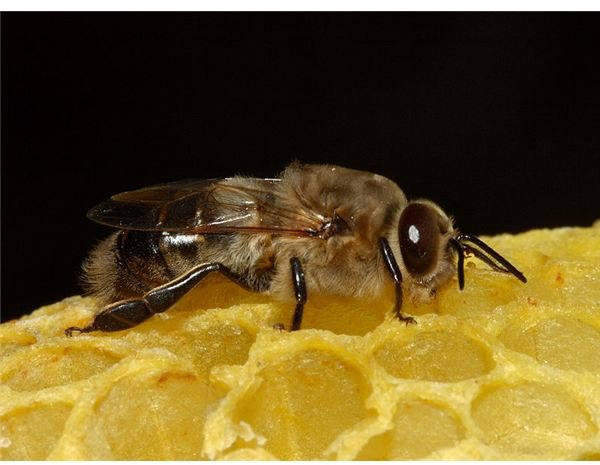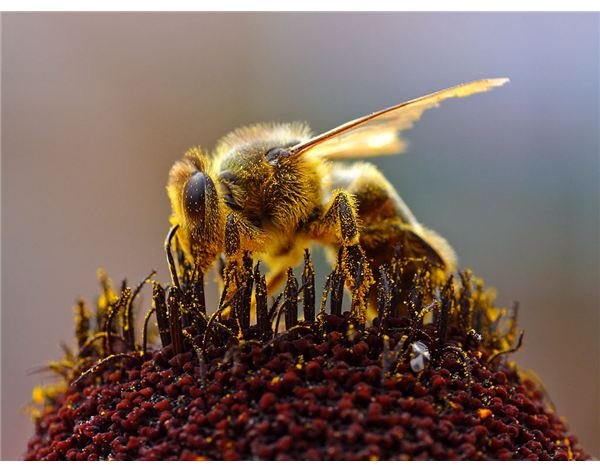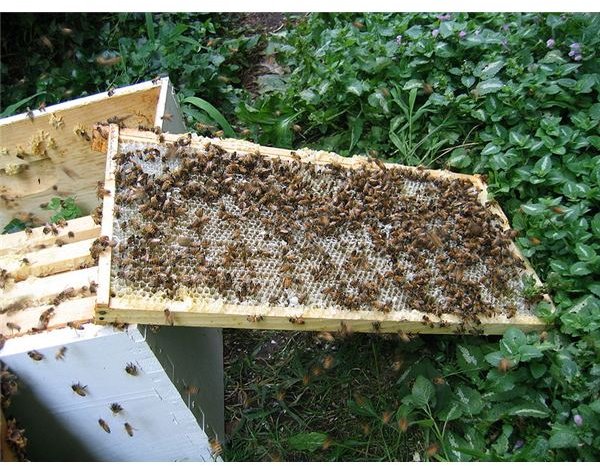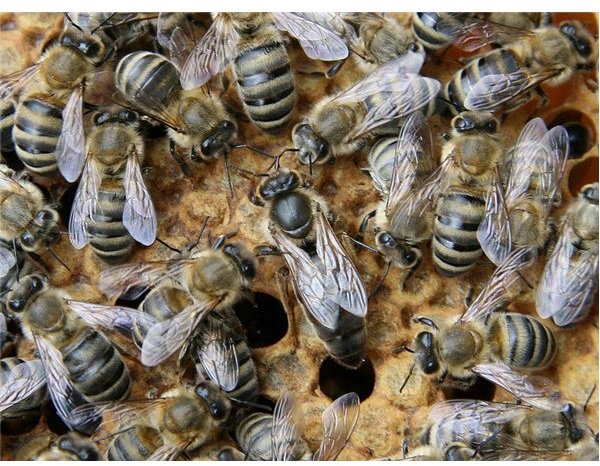Learn Honey Bee Facts and Species Name of a Honey Bee
About Honey Bees
Humans enjoy the sweet treat of honey and find bees wax quite handy. We also rely on the pollination services of the honey bee for the production of many crops. Honey bees live busy and interesting lives.
Honey bee colonies are made up of groups called castes, which consists of a queen bee, drones and worker bees. Each group is essential to the colony’s survival. Queens are responsible for reproduction, drones fertilization and worker bees care for the hive and its inhabitants.
Queen Bee
Queen bees develop from larvae that are fed an exclusive diet of royal jelly. Other types of bees have developed from larvae that are fed royal jelly at the beginning of their development and nectar for the remainder of the development.
Each hive has one queen bee whose main responsibility in the hive is devoted to breeding. The queen bee only goes on one mating flight in her life. Mating takes place just a few days after her birth. She stores the sperm from mating to later use when she lays eggs. She can lay up to 1,500 eggs a day. The queen bee has a different appearance than the other bees. She has a larger abdomen, making her the largest bee in the hive. Her mouth is different than the other bees, giving her the ability to chew. Her stinger is curved and does not have barbs on it, which gives her the ability to sting over and over again without dying. The queen uses her stinger to fight other queen bees. For instance when a new queen hatches, she will kill the weaker old queen with her stinger.
Drones

There are only a few hundred drones in a hive. Drones are the only male bees. Their only function in the hive is to mate with the queen. They may mate with the queen from their own hive or a queen from another hive. Most drones do not get the opportunity to mate in their lifetime. Drone bees find the queen bee by detecting a special scent that she releases from her mouth. When the queen wants to mate she leaves the hive and flies up in the air. During the mating flight she mates with multiple drones. Drones have larger eyes than the other bees, which enable them to spot the queen bee during the mating flight. During mating, the drones’ reproductive organs rip out of their bodies, causing their death. When fall comes and mating is done, the remaining drones in the hive are no longer needed. The worker bees drag the drones out of the hive and leave them to fend for themselves. Drone bees do not have stingers and are unable to protect themselves. Once kicked out of the hive, they starve or are eaten by an animal.
Workers

Each hive has thousands of worker bees. Of the approximate 20,000 bees in a hive, the majority are worker bees. Worker bees are all females. Workers are the busiest bees in the hive. They are responsible for gathering pollen, feeding the queen and drones, feeding and caring for the eggs, keeping the hive cool, protecting the hive and building and maintaining the hive. Worker bees’ bodies are different than that of the queen. They have glands that secrete wax, pouches on their legs to hold pollen, an extra stomach to carry honey and a mouth designed for collecting pollen. The stinger of the worker bee differs from the stinger of the queen bee, in that it is straight and has barbs on it. When the worker bee stings, her stinger detaches and rips out her intestines causing her death.
Threats to Honey Bees
Honey bees are not listed as an endangered species, but decreases in their numbers have not gone unnoticed. Farmers who rely on the honey bees to provide essential crop pollination have noticed their decrease in numbers.
Habitat Loss
Industrialization is a threat to the survival of the species. Honey bees need a large area with plants to collect pollen.
Pesticides
The use of pesticides in farming poses a huge problem with the species. Honey bees are very sensitive to chemicals and die often from exposure.
Mites
Tracheal mites and varroa mites are two species that are not native to North America, that have been responsible for many honey bee deaths. The mites can quickly kill off whole colonies. Wild colonies are most affected because the contamination of mites goes undetected by humans. Bee keepers can medicate captive colonies when detection of mites is seen.
Colony Collapse Disorder
Colony Collapse Disorder is a term used to describe the sudden disappearance of all the adult bees in a hive. The disorder is responsible for the decline of an estimated 1/3 of the honey bee populations. The exact cause of Colony Collapse Disorder is not known. Colony stress, habitat loss and pesticides may be partially to blame. The Israeli Acute Paralysis Virus may be at least partially responsible. Colony Collapse hives have shown traces of the virus. It is not known if colony stress may make the bees more susceptible to getting the virus.
Interesting Facts

Honey bees keep warm by huddling together in the hive.
Worker bees keep the hive cool during warm weather, by flapping their wings to circulate air.
Worker bees communicate the direction of plants to each other by exhibiting a complex dance that consists of turning the body and wing flaps.
As required by law, bee keepers keep captive bees in man made hives that provide easier access to honey. They also allow the bee keeper to regularly inspect the colony for disease.
Worker bees pollinate plants when they collect pollen to make honey. The bees’ body produces a slight electrostatic charge that causes pollen to stick to their legs. Upon traveling from plant to plant, pollen is transferred between plants and pollination happens.
Scientific Classification
Kingdom: Animalia
Phylum: Arthropoda
Class: Insecta
Order: Hymenoptera
Family: Apidae
Genus: Apis
Scientific Name: Apis mellifera
Photo Credits
Waugsberg: en.wikipedia.org/wiki/GNU_Free_Documentation_License
Waugsberg: en.wikipedia.org/wiki/GNU_Free_Documentation_License
pdphoto.org: Public Domain
Killerlimpet: Public Domain
